#christiane von goethe
Explore tagged Tumblr posts
Note
Let's talk about Christine Vulpius Babes!
Absolute Ikone, und wie ich finde immer noch kolossal unterschätzt. Vor ein paar Jahren habe ich eine Biographie zu ihr gelesen und sie sehr zu schätzen gelernt. Eine bodenständige, starke, interessante Frau, die mit/durch/wegen Goethe viel durchgemacht hat und ich finde es ein Verbrechen, dass sie immer noch nur in der Verbindung zu ihm erwähnt wird. Als wäre die Frau eine Vase im Gartenhaus! Wenn ich Arbeiten über ihren "sexuellen Einfluss auf Goethe" lese...boah. Igitt.
#JusticefürChristiane2023
Thoughts?
sehr gerne rede ich über christiane !! sie ist eine königin und ich liebe sie.
ich hoffe das buch, das du gelesen hast, war nicht christiane und goethe von sigrid damm ! oder generell von sigrid damm keine ahnung was madame noch über die beiden geschrieben hat aber ich möchte die chance hier mal nutzen und sagen dass es absoluter bullshit ist in jeder hinsicht (kann sein dass du die bücher gar nicht gelesen hast, sorry for derailing aber ich muss da schon länger drüber reden haha). ihre "recherche" ist keine recherche, die meisten sachen hat sie erfunden oder komplett aus dem kontext gerissen, damit es in ihr narrativ passt. z.b. christianes beruf: es hat sich mittlerweile als fakt etabliert, dass sie in der kunstblumenmanufaktur von bertuch gearbeitet hat, wofür es keine belege gibt. wir wissen nicht, wo christiane vor goethe gearbeitet hat. sigrid damm war die erste, die das geschrieben hat, und sie hat es so schlau verpackt, dass ich letztens sehr lange nach dem zu der these gehörigen "wahrscheinlich" suchen musste. es kam 10 seiten vorher. seitdem haben es sehr viele forscher:innen einfach bei ihr abgepinselt
am wütendsten macht mich die darstellung der briefe. jeder einzelne ist so gnadenlos aus dem kontext gerissen und mir ist klar, dass man in einem buch, in dem es um viele aspekte geht, nicht einfaxch den kompletten edierten briefwechsel reinhauen kann aber komm schon. in meinem praktikum hatte ich letztens das glück mir eine masse von briefen zwischen den beiden anschauen zu können und die waren allesammt so zuckersüß, dass ich fast vergangen bin. es sind so verdammt viele und das alles ja nur aus den kurzen zeiten, in denen die beiden nicht am selben ort waren. viele andere sind nicht mehr erhalten aber belegt (durch sendungsrechnungen oder durch antwortbriefe) und wie viele nicht erhalten und nicht rekonstruierbar sind ist halt auch noch die frage.
goethes briefe werden oft "kalt" genannt, was ich absolut nicht nachvollziehen kann. ja, alle schriftlichen dokumente ab den späten 1770ern/frühen 1780ern kann im vergleich zu seinen früheren sachen kalt nennen, weil er jetzt halt 30 ist und keine 5 ausrufezeichen hintereinander verwendet. viele der christiane briefe hat er nicht eigenhändig geschrieben, sondern einem schreiber diktiert, aber das war normal für goethe. die meisten seiner briefe waren von schreiberhand, weil sie laut seiner philosophie persönlicher waren. er konnte direkt vom herz aufs blatt "sprechen", wie er es in einer konversation von gesicht zu gesicht machen könnte, ohne, dass seine worte durch seine hand gebremst werden würden. idk about you aber ich find den gedanken super süß. sprachnachrichten aber als brief. dann gibts aber auch eigenhändige briefe und das sind meistens die, in denen er sehr private dinge schreibt, die selbst ein schreiber (der ja eigentlich alles mitkriegt) nicht unbedingt mitbekommen geschweige denn mitschreiben sollte. liebesbekundungen sind aber nicht nur auf die eigenhändigen briefe beschränkt. die meisten, die ich lesen durfte, haben mit einer liebeserkl��rung geöffnet, hatten liebeserklärungen im hauptteil und meistens einen ganzen absatz an liebeserklärungen vor der schlussformel, die für sich selbst auch nochmal eine liebeserklärung an sich war. und jede einzelne war zuckersüß. (die besten hab ich mir aufgeschrieben und mein notizbuch dann verloren aber wenn ichs wiederfinde werdet ihr euch davor nicht retten können). selbst die kürzesten briefe hatten eine liebevolle abschiedsformel. und natürlich sind briefe nicht alles aber wenn sie schon in briefen so miteinander sind?
ich unterschätze überhaupt nicht, was sie durchmachen musste. einerseits, weil goethe oft unterwegs war (was aber in anbetracht seiner position nicht ungewöhnlich viel war und er ist, wenn er z.b. in jena war, manchmal einfach für einen tag zurückgekommen weil er sie sehen wollte) und andererseits, weil er sie nicht geheiratet hat. das war natürlich scheiße von goethe, weil, so sehr er hier eine eigene lebensphilosophie hatte, musste er sich dessen bewusst sein, was es gesellschaftlich mit christiane machen würde und dass sie ab einem gewissen punkt (schwangerschaft) nicht mehr wirklich nein dazu sagen konnte, sondern sich auf seine ideen von wegen wir sind quasi verheiratet aber nicht offiziell einlassen musste (wobei es wahrscheinlich ist, dass sie sich vor ihrer schwangerschaft schon darauf eingelassen hat. zumindest haben die beiden ihren hochzeitstag immer zum jubiläum von einigen tagen nach ihrem ersten treffen gefeiert. inwiefern das jetzt was aussagt sei dahingestellt).
mein punkt hier ist dass es natürlich eine beschissene entscheidung war (von der wir allerdings nicht wissen inwiefern christiane ein problem oder auch kein problem damit hatte) aber was sie eigentlich durchmachen musste, war nicht wegen oder durch goethe, sondern direkt wegen und durch die höfische kultur und die damalige gesellschaft. sie wurde komplett dämonisiert und ausgegrenzt, weil alle sie nur als mätresse goethes gesehen haben, die ein uneheliches kind von ihm hatte. und das alles ist super schrecklich und sie tut mir unfassbar leid dafür, aber es wäre realistisch gesehen auch nicht viel besser geworden, wenn sie geheiratet hätten. ein bisschen natürlich, aber sie war "von niederem stand" und wäre den ganzen lästereien was uneheliche kinder etc. anging aus dem weg gegangen, hätte aber ganz neue probleme gehabt. also ja, goethe hat absplut nicht perfekt gehandelt, aber er hat sie geliebt, er war oft gut zu ihr, sie hat ihn offensichtlich geliebt und die größten leiden kamen von außen. deswegen finde ich es absolut nicht fair goethe so zu verurteilen was das angeht.
arbeiten, die sie nur als objekt betrachten, finde ich absolut anwidernd, passiert aber (LEIDER !!) mit vielen frauen in der forschung, vor allem in der goethe forschung. keine ahnung wer festgelegt hat, dass wir goethe als sexikone ansehen sollten und sein ganzes leben in richtung sex analysieren sollten. das verhalten der "wissenschaft" oder gesellschaft generell gegenüber den frauen in seinem leben ist ekelhaft. alle von ihnen hätten besseres verdient (behandelt zu werden wie menschen for once), auch christiane (oder vor allem christiane, weil sie auf jeden fall zu denen gehört, die am meisten davon abkriegen).
allerdings kann ich verstehen, dass sie nur in verbindung mit goethe erwähnt wird. sowas macht mich eigentlich sehr sauer, wenn zum beispiel caroline böhmer-schlegel-schelling nur in bezug auf ihre männer erwähnt wird, als hätte sie nicht einen beitrag zur literatur geleistet. oder bei caroline von wolzogen, die eigene literarische werke verfasst hat und nicht nur als schillers schwägerin besprochen werden sollte. bei christiane von goethe ist halt das problem ("problem"), dass man sie wirklich nicht kennen würde, wenn sie nicht goethes frau wäre. sie hat nichts geschrieben, nichts gemalt, nichts erfunden, nichts entdeckt. und das ist nicht schlimm. es wertet sie nicht ab. sie war hausfrau, eine sehr gute und sehr liebende. aber wäre sie die hausfrau von johann-christian müller aus möhrendorf würden wir nunmal nicht über sie reden, was natürlich schade wäre, weil christiane ein engel ist und ein toller mensch, aber wer weiß ob anna-elisabeth müller aus möhrendorf, frau von johann-christian müller, das nicht auch war.
ich bin froh, dass wir christiane heute noch kennen und heute noch über sie reden, weil ich sie sehr liebe. aber, um mit ihren worten abzuschließen:

#bitte mobbt mich nicht wegen dem foto meine kamera hat leider immernoch einen riss#ig es schließt nicht mit ihren worten ab sondern mit einer paraphrase ihrer worte#christiane vulpius#christiane von goethe#goethe
11 notes
·
View notes
Text

#art#faust#johann wolfgang von goethe#mephistopheles#Émile Bayard#paul christian#Histoire de la Magie#Du Monde Surnaturel Et de la Fatalite a Travers Les Temps
237 notes
·
View notes
Note
hello! i wanted to ask you if you know something about these portraits. i suppose they are from one author, there's a lot of similarities in the style + they literally look paired!! i really want to know who's the genius that made this and if there is some kinda story behind it


Well i think this has to be filed under 19th century fanart, i.e. these portraits aren't contemporary. They also look very idealised and do not really resemble neither Goethe nor Schiller (except for characteristic features like Schiller's blond hair (that was actually ginger) and his open collar).
These portraits were used a lot for postcards and you'll find endless versions/copies of them:






The original artist might be Karl Jäger (1833-1857), although I'm not sure. It just was kind of his thing to paint or draw "famous men". It's very hard to tell though what version of these portraits is the original because there are so many of them. Jäger's wikipedia says that he did a lot of "grisailles" (grey paintings) so I think that maybe the two matching postcards above, the ones that have Jäger's name on them, might be the "originals" (here the print version).
The only (to my knowledge) contemporary painter who painted both is Gerhard von Kügelgen (1772-1820). However, even he painted his Schiller portrait after Schiller's death (1809) and used the 1794 bust by Dannecker and Schiller's death mask for reference.


Which leaves us with this wonderful drawing from 1804 by Johann Christian Reinhart as the only real contemporary depiction of both:

Johann Christian Reinhart btw was a friend of Schiller's and also left us these awesome Schiller drawings from 1787:


36 notes
·
View notes
Note
Schoethe class conscience Gespräch One-Shot! Schoethe class conscience Gespräch One-Shot! Context is for WEAKLINGS, just throw us the shreds!
"Bitte sag, dass du nicht FDP wählst."
Ein ganz dumpfes, schweres Gefühl hatte sich in Friedrichs Bauch breitgemacht. Johann sah auf und blinzelte ihn zweimal langsam an.
"Wie kommst du denn jetzt darauf?"
"Ich mein's ernst. Sag mir, dass du nicht FDP wählst."
Das wär's jetzt. Wirklich.
Johann schüttelte den Kopf.
"Ich habe die Grünen gewählt. Aber sagst du mir jetzt bitte, wo diese Frage herkommt?"
Friedrich fiel ein Stein vom Herzen. Halleluja. Gleichzeitig erwischte ihn das schlechte Gewissen.
"Du... Naja, du bist halt so..." - er machte eine vage, Johann umfassende Geste - "... posh?"
Jetzt war es ihm doch irgendwie peinlich, gefragt zu haben.
Johann schnaubte.
"Bitte, die von Goethes haben schon CDU gewählt, da war Christian Lindner noch ein Funkeln im Auge seiner Urgroßmutter." Ein Schmunzeln schlich sich in seinen Mundwinkel. "Du solltest mal meinen Vater hören..."
***
"Du hast ein HAUS? In Frankfurt?"
"Ja."
"Und dir gehört dieses Haus hier? Auch so richtig mit Eigentum und Grundbuch?"
"Ja."
"Du bist Eigentümer dieses Hauses hier, in dem du wohnst, und du besitzt noch ein weiteres Haus, in Frankfurt, das du vermietest?"
"Streng genommen sind es zwei Häuser, aber ja."
"Zwei- Du bist VERMIETER???"
"... Ja."
"Gott verdammt, Johann, ist das dein Ernst??"
"Ja. Wenn du dich damit besser fühlst, ich verlange nicht mehr als die ortsübliche Vergleichsmiete und während Corona habe ich für mehrere Monate die Miete erlassen."
"Das - Johann, I swear to God, wenn du die Miete erhöhst, verlasse ich dich."
49 notes
·
View notes
Text
Das Erlkönig-Manöver, aber die Gang besteht aus Christiane Vulpius, Cornelia Goethe, Christophine Reinwald, Ferdinand von Hollwede, Ulrike von Kleist, Wilhelmine von Zenge und [ich weiß nicht wer für die Arnims mitkommt]
#in words alles leute vor deren namen man ein lautes 'justice for!' setzen möchte#ah shit berndi darf auch 2 leute schicken#mine kommt noch mit weil das ist mein post
12 notes
·
View notes
Text
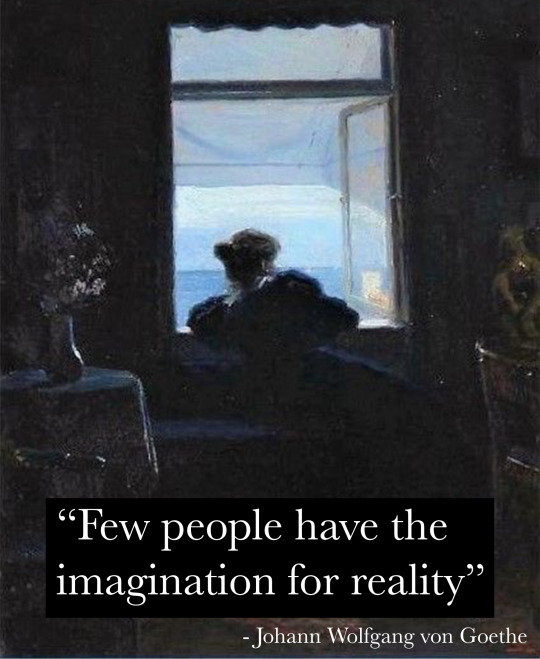
"Few people have the imagination for reality" — Johann Wolfgang von Goethe
Painting: "Interior with a woman looking out the window" by Christian Valdemar Clausen
#classical literature#quotes#sylvia plath#classical quotes#literature#booklr#poetry#franz kafka#albert camus#classics#goethe#romanticism#freidrich nietzsche#nietzche#beethoven#booklover#books#book quotes#books & libraries#bookblr#reading#books and reading#dark academia quotes#dark acamedia#lit#classic literature#literary quotes#quote#words#letters
24 notes
·
View notes
Text

Bettina von Arnim (the Countess of Arnim) (4 April 1785 – 20 January 1859), born Elisabeth Catharina Ludovica Magdalena Brentano, was a German writer and novelist.
Bettina (or Bettine) Brentano was a writer, publisher, composer, singer, visual artist, an illustrator, patron of young talent, and a social activist. She was the archetype of the Romantic era's zeitgeist and the crux of many creative relationships of canonical artistic figures. Best known for the company she kept, she numbered among her closest friends Goethe, Beethoven, Schleiermacher, and Pückler and tried to foster artistic agreement among them. Many leading composers of the time, including Felix and Fanny Mendelssohn, Robert and Clara Schumann, Franz Liszt, Johanna Kinkel, and Johannes Brahms, admired her spirit and talents. As a composer, von Arnim's style was unconventional, molding and melding favorite folk melodies and historical themes with innovative harmonies, phrase lengths, and improvisations that became synonymous with the music of the era. She was closely related to the German writers Clemens Brentano and Achim von Arnim: the first was her brother, the second her husband. Her daughter Gisela von Arnim became a prominent writer as well. Her nephews, via her brother Christian, were Franz and Lujo Brentano.
4 notes
·
View notes
Text
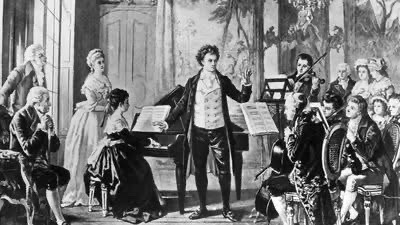
WHY BEETHOVEN SNUBBED PRINCES AND PUT HIS MUSIC FIRST
Photo : At a soiree in the residence of Prince Lichnowsky: a painting by Julius Schmid
"Prince, what you are, you are through chance and birth; what I am, I am through my own labor. There are many princes and there will continue to be thousands more, but there is only one Beethoven."
" Those are the words of a man truly not lacking in self-confidence. With them, Ludwig van Beethoven once put Prince Karl von Lichnowsky in his place. In the year 1800, the composer's noble patron had guaranteed him a yearly stipend of 600 guilders. Beethoven had just arrived in Vienna, and the funds were to bridge the gap until the composer earned a regular income.
That was never to happen. During his entire time in Vienna from 1792 until his death in 1827, Beethoven remained a freelance musician. Unlike most of his predecessors, he never had an official position at a court or in the service of the church.
Lichnowsky, Waldstein, Razumovsky and Archduke Rudolph are all names that Beethoven fans recognize: the personages behind them are the dedicatees of the composer's most famous works. It was a time in which music was increasingly being created for a middle-class clientele - and Beethoven was at the forefront of this development. Yet most of his compositions were commissioned by the rich, the famous and the noble - contacts that it was essential for him to maintain.
Self-confidently paying respects
In his 2012 biography "Beethoven. Der einsame Revolutionär" ( Beethoven. The Lonely Revolutionary), Jan Caeyers showed how even a Ludwig van Beethoven was forced to bow to reality - and to the influential people of his time. Sometimes the confident and even arrogant musician had to make "obsequious compliments" to get into their good graces.
Like many in his generation, Beethoven had been inflamed by the ideals of the French Revolution. But liberty, equality and fraternity didn't prevent him from pretending that the "van" in the name "Ludwig van Beethoven" pointed to noble heritage, like the German "von." Such was not the case, however; the name was simply an indication of his Flemish forefathers.
Beethoven moved in noble circles purely due to the strength of his art - and many were willing to excuse his lack of courtly manners.
The German man of letters Johann Wolfgang von Goethe wrote, "His talent astonished me, but unfortunately his personality is completely unrestrained." The basic attitude of that "unrestrained personality" was constant however, as expressed in a letter Beethoven wrote to his former teacher Christian Gottlob Neefe: "If I am a great man one day, you will have made a contribution to that."
Multiple sources of support
In his first years in Vienna, a number of noblemen contributed to the young musician's success. Some remained loyal benefactors for decades, including Prince Franz Joseph Maximilian von Lobkowitz (1772-1816), the Russian ambassador Count André Razumovsky (1752-1836) and Count Moritz Fries (1777-1826).
His most important early patron, however, was Prince Karl Lichnowsky (1761-1814), who would become a source of income for a dozen years. Lichnowsky's residence was the meeting place of musicians and composers and saw the premieres of a number of Beethoven's early works.
The composer was even invited to live with the Lichnowskys as a "member of the family," and it was on his recommendation that several other noblemen offered commissions and various forms of financial support to Beethoven.
In gratitude, Beethoven dedicated several works to Lichnowsky, including his Second Symphony and the "Pathétique" Sonata. That gratitude was not endless, however. Around the year 1806, Beethoven was to perform for the prince's guests: French officers. His refusal to do so resulted in a scandal, and the princely payments were discontinued. Returning to Vienna, the furious composer smashed a bust of the prince.
Business savvy and a royal friendship
Beethoven was also something of an entrepreneur. He had most of his works printed and constantly negotiated with publishing houses, so that he would no longer be financially dependent on Lichnowsky.
For the remainder of his life, he did have another royal patron: Archduke Rudolph of Austria-Hungary (1788-1831), the youngest son of Emperor Franz. Himself a proficient pianist and composer, Rudolph was Beethoven's sole student of composition.
It was to him that Beethoven dedicated the greatest number of works, including the Fourth and Fifth Piano Concertos, the piano sonatas subtitled "Hammerklavier" and "Les Adieux," the "Great Fugue" and the Missa solemnis. The latter was to have been performed in 1820 on the occasion of Rudolph's coronation as Archbishop of Olmütz. But the mass, which Beethoven once described as his greatest work, wasn't finished until three years later - just one more indication that for Beethoven, everything - and everyone - took second place to his art .
A close relationship to Archduke Rudolph
In 2003, the American musicologist Lewis Lockwood wrote, "As much as Beethoven scorned other aristocrats, he was deferential to the Archduke, and he took pride in this high social connection." Rudolf treated him "like a friend, not a servant," the composer wrote in 1819.
Predictably, however, Beethoven grumbled intermittently about his teaching obligations, frequently cancelling the lessons that were supposed to take place twice or three times a week, feigning illness. When his royal patron objected, Beethoven set the record straight: He was not the Archduke's "servant."
Letters from Beethoven to Rudolph nonetheless contain generous praise of his student's talent and inspiration - but still, he wasn't afraid to point out mistakes or to admonish him to strive for improvement. Here, too Beethoven managed to have the last word - thoroughly unusual for a musician of that time. "
by Deutsche Welle, 12/2016
#beethoven#beethovenlife#ludwig van beethoven#a classical life#classical music#art#18th century#classical history#classic#classical art#classical composer#classical#classical musician
3 notes
·
View notes
Text

Princess Louise of Hesse-Darmstadt (1761–1829)
Artist: Johann Friedrich Dryander (German, 1756–1812
Date: 1783
Medium: Pastel on paper
Collection: Schlossmuseum Darmstadt, Darmstadt, Germany
Princess Louise Henriette
Princess Louise Henriette Karoline of Hesse-Darmstadt (15 February 1761 – 24 October 1829), was the first Grand Duchess of Hesse and by Rhine by marriage.
Louise was a daughter of Prince George William of Hesse-Darmstadt (1722–1782) from his marriage to Countess Maria Louise Albertine of Leiningen-Dagsburg-Falkenburg (1729–1818), daughter of Count Christian Karl Reinhard of Leiningen-Dachsburg-Falkenburg-Heidesheim.
The princess was in 1770 in the entourage of Marie Antoinette, as they traveled to France for her marriage. Louise exchanged letters with the French queen until 1792.
Louise married on 19 February 1777 in Darmstadt, her cousin the then hereditary prince Louis I of Hesse-Darmstadt (1753–1830). Her husband ruled Hesse-Darmstadt from 1790 as Landgrave Louis X and from 1806 as Ludwig I, Grand Duke of Hesse and the Rhine.
Louise spent the summer months since 1783 in the State Park Fürstenlager, and died there in 1829. Here provided charity to the population Auerbach. The Grand Duchess was described as amiable and revered by the nation. Johann Wolfgang von Goethe stayed at her court and Friedrich Schiller read from his Don Carlos in her salon. It was said that Napoleon Bonaparte promised the beautiful Louise, whom he believed to be one of the cleverest women of her time, that he would give her a crown.
#portrait#princess#princess louise of hesse-darmstadt#painting#grand duchess of hesse#german nobility#woman#white dress#open book#flowers#bows#table#german princess#pastel on paper#fine art#artwork#german culture#german history#bell#johann friedrich dryander#german painter#german art#18th century painting#european art
2 notes
·
View notes
Text
This is Goethe's first novel, published in 1774. Written in diary form, it tells the tale of an unhappy, passionate young man hopelessly in love with Charlotte, the wife of a friend - a man who he alternately admires and detests. 'The Sorrows of Young Werther' became an important part of the 'Sturm und Drang movement, and greatly influenced later 'Romanticism'. The work is semi-autobiographical - in 1772, two years before the novel was published, Goethe had passed through a similar tempestuous period, when he lost his heart to Charlotte Buff, who was at that time engaged to his friend Johann Christian Kestner.
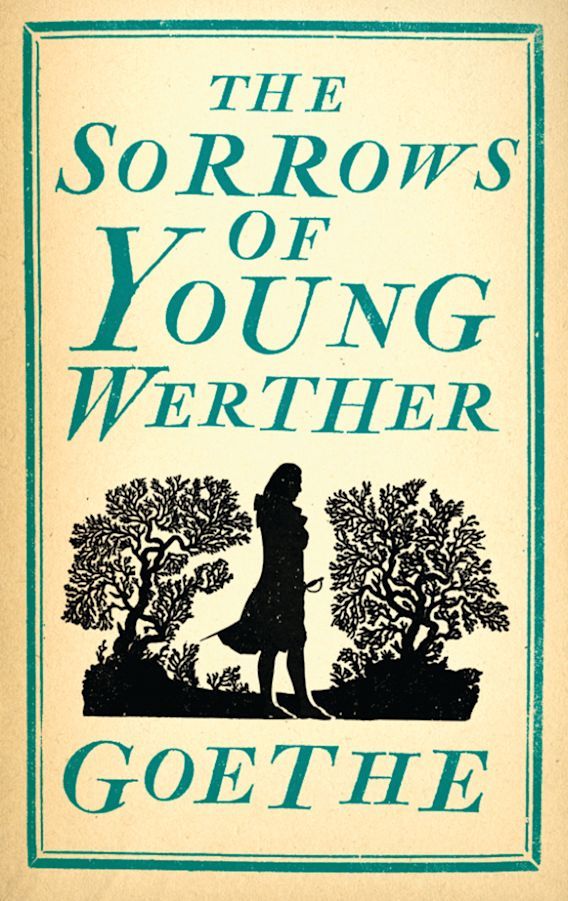
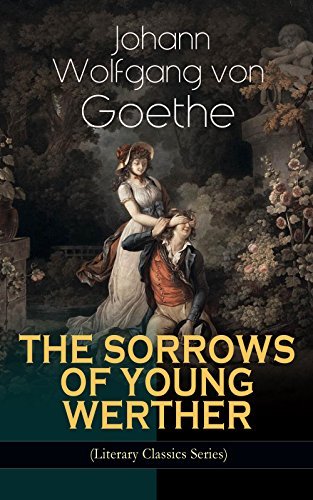
#book: the sorrows of young werther#author: johann wolfgang von geothe#genre: classics#genre: german literature#genre: romance#year: 1700s
14 notes
·
View notes
Text
classic list of Disney originals in chronological order starting in the 40s/50s ending 2023
Snow White & Little Briar Rose & The Frog Prince & Rapunzel by Brothers Grimm
The Adventures of Pinocchio by Carlo Collodi
The Sorcerer’s Apprentice by Johann Wolfgang von Goethe Dumbo the Flying Elephant by Helen Aberson & Harold Pearl Bambi, a Life in the Woods by Felix Salten Casey at the Bat by Ernest Thayer
Peter & the Wolf by Sergei Prokofiev Little Bear Bongo by Sinclair Lewis
Jack and the Beanstalk by Benjamin Tabart Johnny Appleseed, Little Toot by Hardie Gramatky Trees by Joyce Kilmer & Pecos Bill
The Wind in the Willows by Kenneth Grahame The Legend of Sleepy Hollow by Washington Irving
Cinderella & Sleeping Beauty by Charles Perrault
Alice’s Adventures in Wonderland & Through the Looking-Glass by Lewis Carroll
Peter Pan by J.M. Barrie Joe Grant’s Pet English Springer Spaniel Lady, Happy Dan, The Cynical Dog, Lady & the Tramp: The Story of Two Dogs by Ward Greene
The Sleeping Beauty by Pyotr Ilyich Tchaikovsky The 101 Dalmatians by Dodie Smith
The Sword in the Stone by T.H. White
The Jungle Book by Rudyard Kipling
The Secret Origin of the Aristocats by Tom McGowan & Tom Rowe The Legend of Robinhood **
Winnie the Pooh book series by A.A. Milne
The Rescuers book series by Margery Sharp The Fox and the Hound by Daniel P. Mannix
The Chronicles of Prydain by Lloyd Alexander
Basil of Baker Street series by Eve Titus
Oliver Twist by Charles Dickens
The Little Mermaid & The Steadfast Tin Soldier & The Snow Queen by Hans Christian Andersen
Beauty and the Beast by Jeanne-Marie Leprince de Beaumont
Aladdin and the Magic Lamp from 1001 Nights Hamlet by William Shakespeare
The Lives of Pocahontas and John Smith **
Notre Dame de Paris by Victor Hugo
The Greek myth of Heracles **
Ballad of Mulan by Guo Maoqian
Tarzan of the Apes by Edgar Rice Burroughs Noah’s Ark inter Alia Kingdom of the Sun by Roger Allers & Matthew Jacobs
Inca mythology **
The Legend of Atlantis ** Treasure Island by Robert Louis Stevenson Inuit cultures ** Sweating Bullets by Mike Gabriel
Henny Penny **
A Day with Wilbur Robinson by William Joyce •
American Dog by Chris Sanders
The Frog Princess by E.D. Baker
Scandinavian & Sámi cultures **
Big Hero 6 by Man of Action
Buddy cop films ** Polynesian cultures & Hawaiian mythof Māui** Southeast Asian cultures & mythology ** Colombian culture **
Saludos Amigos
The Three Caballeros Make Mine Music Melody Time
The Adventures of Ichabod & Mr. Toad
The Black Cauldron
The Great Mouse Detective
Fantasia & Fantasia 2000
Atlantis : The Lost Empire
Treasure Planet
Brother Bear
Home on the Range Meet the Robinsons
Bolt
Zootopia
Moana
Raya and the Last Dragon
Encanto
Strange World Nov. 23 2022
Wish Nov. 22, 2023
4 notes
·
View notes
Text
Prometheus and its Ancient Origins
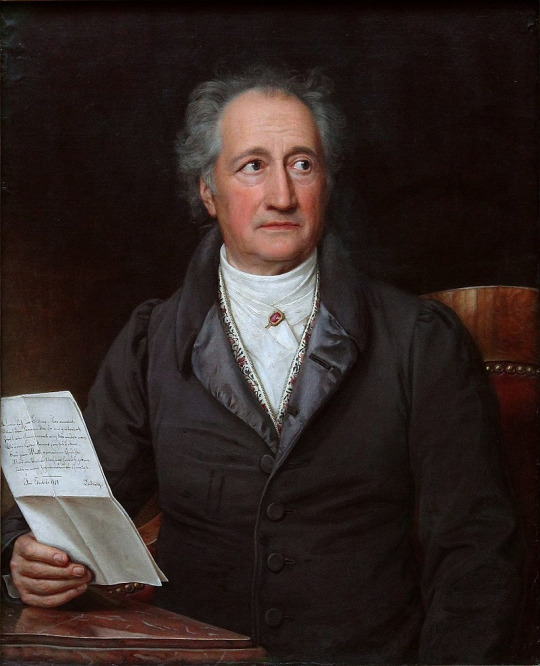
By Joseph Karl Stieler - Transferred from nds.wikipedia to Commons..org by G.Meiners at 12:05, 15. Okt 2005., Public Domain, https://commons.wikimedia.org/w/index.php?curid=375657
Johann Wolfgang von Goethe, widely known as just Goethe, was a German polymath (someone with a vast number of specialties) who lived from 1749-1832. He was born in Frankfurt at a time that it was part of the Holy Roman Empire and died in Weimar when it was part of Saxe-Weimar-Eisenach. He also had Turkish ancestry through his Maternal grandmother. He was tutored by his father, who had studied law, and others in Latin, Greek, French, and Italian along with physical skills such as dancing, riding, and fencing, which was fairly typical of the time. He was particularly fond of the writings of Homer as well as drawing and theater. When he went to Leipzig University starting when he was 16, he studied law. He found learning ancient laws by heart detestable and went to lectures by Christian Fürchtegott Gellert, a poet, instead. He met Anna Katharina Schönkopf and between his love for her and admiration for Gellert, he wrote his first book of poetry and his and his first comedy, though he also discarded a lot of his writings from this time as well.
Because he was doing poorly in his main studies, Goethe was forced to return home when he was 19. He also became very ill for about a year and a half. During this time, his relationship with his father also suffered. After that time, he left to finish school at the University of Strasbourg. There, his health improved. He met Johann Gottfried Herder, who exposed Goethe to William Shakespeare's works, Ossian, the narrator in James Macpherson's poems, and Volkspoesie (folk poetry). He credits the introduction of Shakespeare's work with his love of literature. He graduated with a Licentate in Law when he was 22 and set up a practice in Frankfurt. He wanted to make the practice of law more humane, but his youth caused him to reach too far, bringing censure and loss of clients. He moved to the court of Darmstadt that worked better with his temperament. He also was able to pursue literature with his father's blessings.
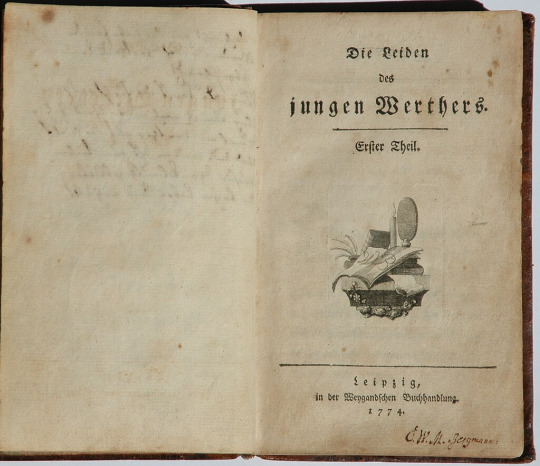
By © Foto H.-P.Haack (H.-P.Haack) - Sammlung Dr. Haack → Antiquariat Dr. Haack Leipzig → Privatbesitz, CC BY 3.0, https://commons.wikimedia.org/w/index.php?curid=2140496
He wrote The Sorrows of Young Werther, his breakout novel, when he was 23 and it was semi-biographical. Though it was very successful, he didn't earn much from it because copyright laws at the time didn't really protect writers. Later in his life, though, when there were better protections, he would release 'new, revised' editions of his works.
When he was 26, he was invited to court by Karl August, the Duke of Saxe-Weimar-Eisenach and later Grand Duke. He held many offices in the court including chief advisor and superintendent of the duke's library over the course of the rest of his life. He was also friends and a confidant with the Duke and was more involved in the court than
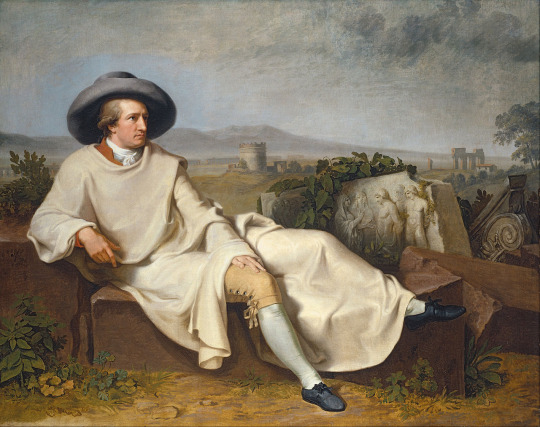
By Johann Heinrich Wilhelm Tischbein - aAH2PRcepgpGwA at Google Cultural Institute, zoom level maximum, Public Domain, https://commons.wikimedia.org/w/index.php?curid=29098753
At 37, Goethe was sent on a journey to Italy and Sicily for two years, inspired by his father. It was almost like a pilgrimage for him, to visit the classical world, and renewed his love of the art of ancient Rome and Greece. He said of Sicily '[t]o have seen Italy without having seen Sicily is to not have seen Italy at all, for Sicily is the clue to everything.' He was struck by the simplicity of ancient Greek architecture as compared to ancient Roman. While he documented much of his first year, there wasn't a lot of documentation of his second year.
Four years after his return, he followed the Duke to the Battle of Valmy during a failed invasion of France, and later at the Siege of Mainz, he was an observer. When he was 57, Napoleon invaded Weimar. Goethe was living with his mistress, Chritiane Vulpus, who was instrumental in protecting his house from the 'spoon guards', those who were the least disciplined. While Goethe froze up, Christiane barricaded the kitchen and cellar and organized the defense of the house. Goethe later wrote '[f]ires, rapine, a frightful night… Preservation of the house through steadfastness and luck.' Rüdiger Safranski wrote 'The luck was Goethe's, the steadfastness was displayed by Christiane'. Shortly thereafter, Goethe married her after having been together for 18 years and having several children together. She died twelve years later.
When he was 72, after a near-fatal illness, he fell in love with a 17 year old Ulrike von Levetzow, but was prevented from proposing by her mother's disapproval. He also had a 'deep emotional bond' with 33 year old Maria Szymanowska, a Polish pianist, who left her husband. He died of heart failure when he was 82 years old.

By No machine-readable author provided. Atoma assumed (based on copyright claims). - No machine-readable source provided. Own work assumed (based on copyright claims)., Public Domain, https://commons.wikimedia.org/w/index.php?curid=1520906
Prometheus in Greek mythology was one of the Titans, his name possibly meaning 'forward thinking' or 'forethought'. His best known myth has him defying the Olympians to bring fire to humanity, the fire leading to technology, which allowed the transmission of knowledge to be more rapid and far reaching, and then civilization. Some of the myths also having him creating humans and also fathering the hero of the flood story. The Olympians, lead by Zeus, set down a sentence of being bound to a rock on either Mount Elbrus or Mount, which are both volcanoes that separate Greece from the 'barbari' in the Caucaus Mountains, and having his liver, the seat of emotions, eaten by an eagle, the creature that represented Zeus, every day. Every night, Prometheus' liver would grow back. He remains there until he is freed by Heracles.

By Heinrich Füger - Public Domain, https://commons.wikimedia.org/w/index.php?curid=175869
Prometheus was written around 1773 and published in 1789, though an unauthorized version published by Friedrich Heinrich Jacobi in 1785. It is written in a German proto-Romantic style called Sturm und Drang (storm and stress), in which extremes of emotions are allowed to breathe and given free range as opposed to the rationality demanded by the Enlightenment. It was initially going to be a play, but was changed into a poem. Prometheus is shown to be creative and rebellious, defying god, and asserting himself against god, and eventually rejecting a belief in god, citing '[w]ho helped me/Against the Titan' insolence?/Who rescued me from certain death,/From slavery?/Didst though not do all this thyself'. He further rails against god by saying '[h]ast though e'er dried up the tears/Of the anguish stricken?…Didst thou e'er fancy/That life I should learn to hate,/And ffly to deserts,/Because not all/My blossoming dreams grew ripe?' He then proclaims that he is creating humans to have the full range of emotional experiences that he has had. This poem is paired with Goethe's poem entitled Ganymed, which expresses the opposite sentiment. Both have been set to or interpreted in music multiple times.
You can read Prometheus here. You can read Ganymed here.
2 notes
·
View notes
Text
Deutschribing Germany
Literature
Middle Ages (5th-15th centuries)
Medieval German literature can be divided into two periods: Old High German literature (8th-11th centuries) and Middle High German literature (12th-14th centuries). The only surviving works from the first period are the Hildebrandslied (Lay of Hildebrand), which is the earliest poetic text in German and tells of the tragic encounter in battle between a father and a son, and Muspilli, which deals with the fate of the soul after death and at the Last Judgment.
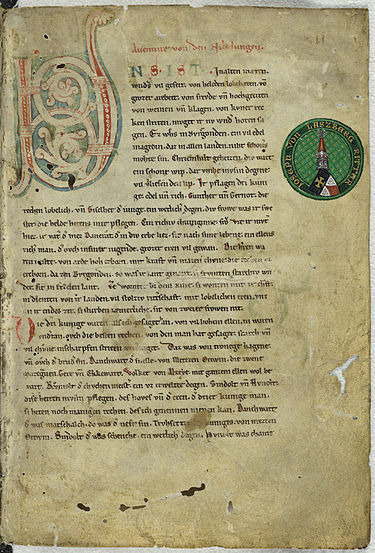
Middle High German literature saw a 60-year golden age known as mittelhochdeutsche Blütezeit, in which lyric poetry in the form of Minnesang—the German version of courtly love—blossomed thanks to poets such as Walther von der Vogelweide and Wolfram von Eschenbach. Another important genre during this time was epic poetry, of which the most famous example is the Nibelungenlied (The Song of the Nibelungs), which narrates the story of prince Siegfried and princess Kriemhild, among other characters.
Renaissance (15th-16th centuries)
Early New High German literature includes works such as Der Ring (The Ring) by Heinrich Wittenwiler, a 9,699-line satirical poem where each line is marked with red or green ink depending on the seriousness of the material, and Das Narrenschiff (Ship of Fools) by Sebastian Brant, a satirical allegory that contains the ship of fools trope.
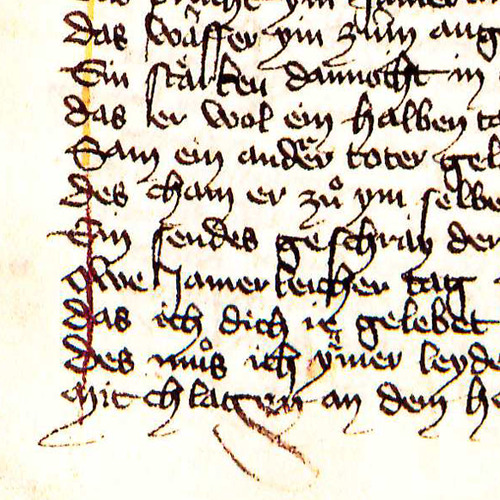
Other important authors are satirist and poet Thomas Murner, humanist Sebastian Franck, and poets Johannes von Tepl and Oswald von Wolkenstein.
Baroque (16th-17th centuries)
The Baroque period is characterized by works that reflected the experiences of the Thirty Years’ War and tragedies (Trauerspiele) on Classical themes, the latter were written by authors such as Andreas Gryphius and Daniel Caspar von Lohenstein. The most famous work is Der abenteuerliche Simplicissimus (Simplicius Simplicissimus) by Hans Jakob Christoffel von Grimmelshausen, a picaresque novel that narrates the adventures of the naïve Simplicissimus.
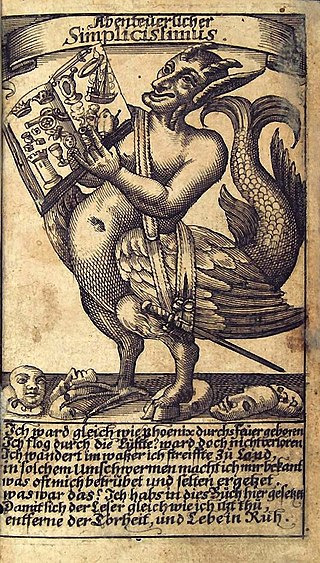
Enlightenment (17th-18th centuries)
The most important writers of the Enlightenment are Christian Felix Weiße, Christoph Martin Wieland, Gotthold Ephraim Lessing, and Johann Gottfried Herder.
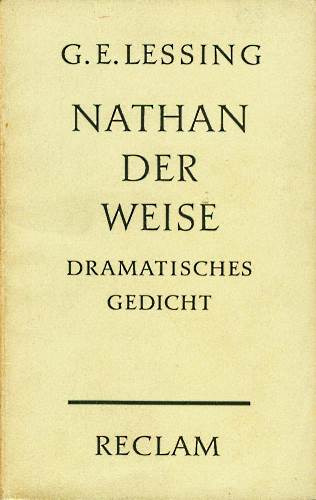
The Age of Reason saw the emergence of two literary movements: Empfindsamkeit (sentimental style) and Sturm und Drang (storm and stress). The first one intended to express true and natural feelings and featured sudden mood changes. The latter movement was characterized by individual subjectivity and extremes of emotion in response to the rationalism imposed by the Enlightenment.
Weimar Classicism (18th-19th centuries)
The main drivers behind Weimar Classicism, which synthesized ideas from Classicism, the Enlightenment, and Romanticism, were Johann Christoph Friedrich von Schiller, and Johann Wolfgang von Goethe.
During this period, Schiller published Die Bürgschaft (The Pledge), a ballad based on the legend of Damon and Pythias found in the Latin Fabulae, and Don Karlos (Don Carlos), a historical tragedy about Carlos, Prince of Asturias, while Goethe wrote Egmont, a play heavily influenced by Shakespearean tragedy, and Faust, a tragic play in which the main character sells his soul to the devil that is considered the greatest work of German literature.
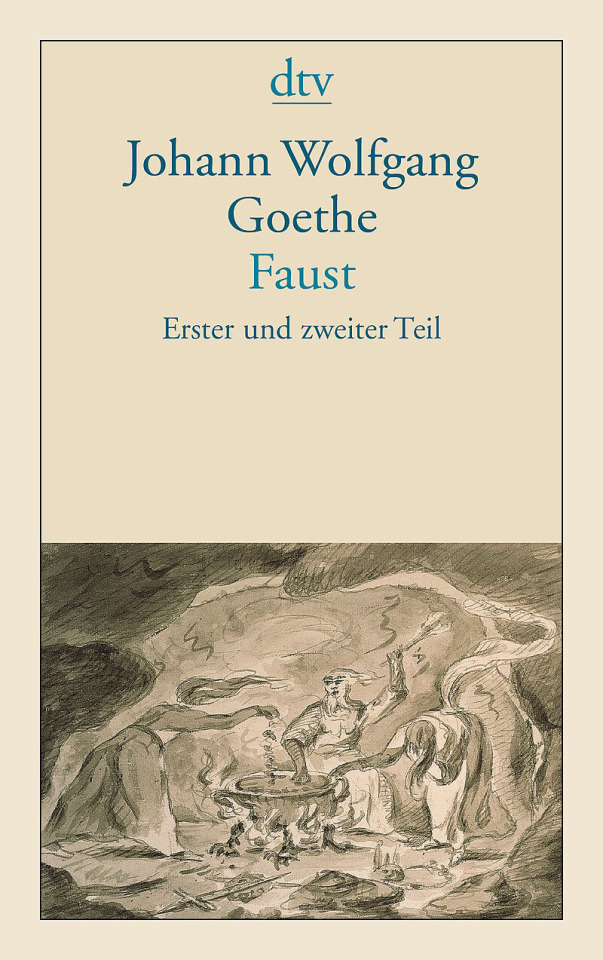
Romanticism (18th-19th centuries)
Important Romantic writers include E. T. A. Hoffmann, author of Der Sandmann (The Sandman), a short story based on the mythical character of said name that puts people to sleep by sprinkling sand on their eyes; Heinrich von Kleist, who wrote Das Kätchen von Heilbronn (The Little Catherine of Heilbronn), a drama set in Swabia in the Middle Ages; Joseph Freiherr von Eichendorff, author of Das Marmorbild (The Marble Statue), a novella about a man who struggles to choose between piety and a world of art, and Novalis, author of Hymnen an die Nacht (Hymns to the Night), a collection of six poems.
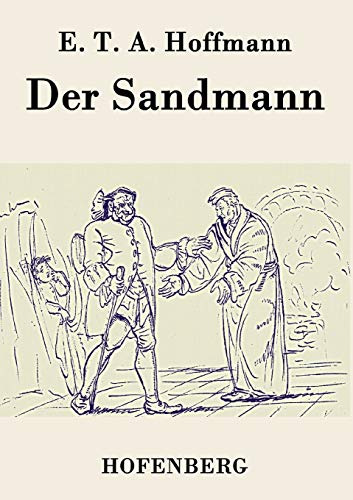
Folk tales collected by the Brothers Grimm became very popular during the Romantic period, as they represented a pure form of national literature and culture.
Biedermeier and Young Germany (19th century)
The Biedermeier period contrasts with the Romantic era and is best exemplified by poets Adelbert von Chamisso, Annette von Droste-Hülshoff, and Wilhelm Müller.
Young Germany was a youth movement whose main proponents were Karl Gutzkow, Ludolf Wienbarg, and Theodor Mundt.
Realism and Naturalism (19th century)
The most representatives realist authors are Gustav Freytag, Theodor Fontane, and Theodor Storm, while Gerhart Hauptmann was the most important naturalist writer.
Weimar literature (20th century)
During the Weimar Republic, writers such as Erich Maria Remarque, Heinrich Mann, and Thomas Mann presented a bleak look at the world and the failure of politics and society.
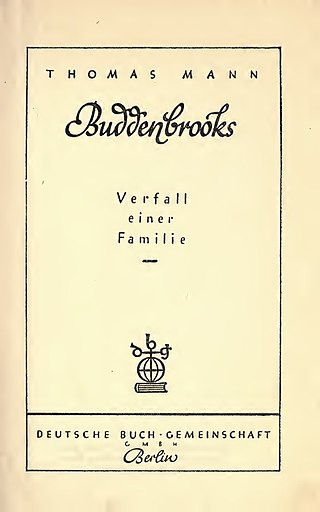
Expressionism (20th century)
As a modernist movement, Expressionism presented the world solely from a subjective perspective, distorting it for emotional effect. Famous authors include novelists Alfred Döblin and Franz Kafka, playwrights Ernst Toller and Georg Kaiser, and poets August Stramm and Else Lasker-Schüler.
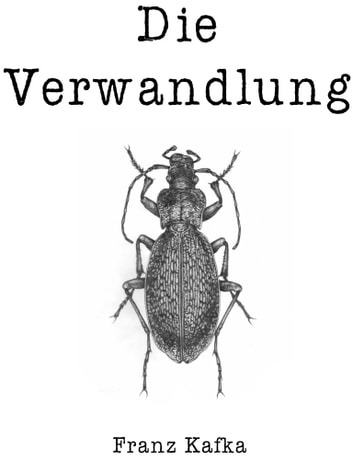
Neue Sachlichkeit (20th century)
Neue Sachlichkeit (New Objectivity) arose as a reaction against expressionism and was characterized by its political perspective on reality and portrayal of dystopias in an emotionless reporting style, showing cynicism about humanity. Authors associated with this movement include Erich Kästner, Hans Fallada, and Irmgard Keun.
Nazi Germany (1933-1945)
During the Nazi regime, some authors went into exile, while others submitted to censorship. The former, who either were of Jewish ancestry or opposed the regime for political reasons, include writers Alice Rühle-Gerstel and Anna Seghers, playwright Bertolt Brecht, and poet and novelist Hermann Hesse/Emil Sinclair.
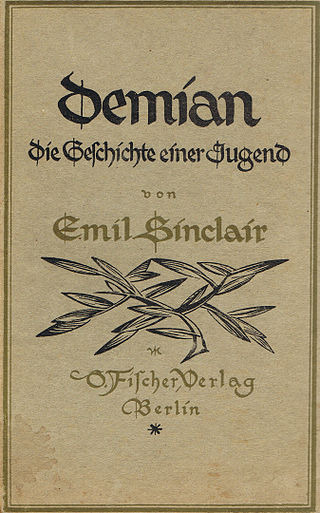
Those who stayed and engaged in inner emigration include writer Friedrich Reck-Malleczewen, poet and essayist Gottfried Benn, writer Hans Blüher, and poet and novelist Ricarda Huch.
Post-war literature (20th century)
The most famous authors in West Germany were Edgar Hilsenrath, Günter Grass, Heinrich Böll, and Group 47, a group of participants in writers’ meetings invited by Hans Werner Richter.
East German writers include Christa Wolf, Heiner Müller, Reiner Kunze, and Sarah Kirsch.
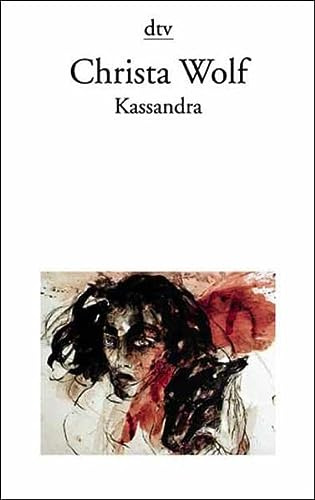
Contemporary literature (21st century)
Fantasy and science fiction authors include Andreas Eschbach, Frank Schätzing, and Wolfgang Hohlbein. Some of the most important poets are Aldona Gustas, Hans Magnus Enzensberger, and Jürgen Becker. Thriller is best represented by Ingrid Noll. Fiction novelists include Herta Müller, Siegfried Lenz, and Wilhelm Genazino.
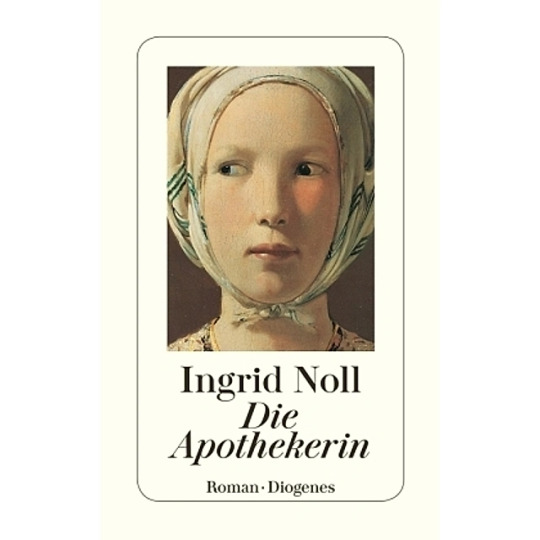
21 notes
·
View notes
Text
Literary Canon (from kissgrammar)
The Holy Bible, Authorized King James Version [At a minimum, the books of Genesis, Exodus, Job, Psalms, from the Old Testament; Matthew, Mark, Luke, John, and Apocalypse from the New.] Whether or not you are Christian is irrelevant. The civilization in which we live is based on and permeated by the ideas and values expressed in this book. Understanding our civilization, the world in which we live, is probably impossible without having read -- and thought about -- at least the most famous books in the Bible. Historically, the King James Version is considered the most artistic, and thus has probably had the most literary influence.
Homer, The Iliad
Homer, The Odyssey
Sophocles, Oedipus the King (Oedipus Rex)
Sophocles, Antigone
Plato, The Republic, especially "The Myth of the Cave"
Ovid, Metamorphoses
Saint Augustine, The Confessions
Dante, The Divine Comedy
Giovanni Boccaccio, The Decameron
Niccolo Machiavelli, The Prince
Giambattista Vico, Principles of a New Science
Miguel de Cervantes, Don Quixote
Geoffrey Chaucer, The Canterbury Tales
Romeo and Juliet
King Lear
Hamlet
Othello
Macbeth
John Donne, "Holy Sonnet XIV"
John Donne, "A Valediction Forbidding Mourning"
Andrew Marvell, "To His Coy Mistress"
John Milton, Paradise Lost
Jonathan Swift, Gulliver's Travels
A Modest Proposal
Daniel Defoe, Robinson Crusoe
Laurence Sterne, The Life and Opinions of Tristram Shandy, Gentleman
Michel de Montaigne, Essays, especially "Of Experience"
Francois Rabelais, Gargantua and Pantagruel
Moliere, The Misanthrope
Blaise Pascal, Pensees
Jean-Jacques Rousseau, Emile
Voltaire, Candide
Erasmus, In Praise of Folly
Johann Wolfgang von Goethe, Faust, Parts One & Two
Honore de Balzac, Old Goriot (also translated as Pere Goriot)
Stendhal, The Red and the Black
Gustave Flaubert, Madame Bovary
Emile Zola, Germinal
Henrik Ibsen, A Doll's House
William Blake
William Wordsworth
Jane Austen, Pride and Prejudice
Lord Byron, Don Juan
John Keats, "Ode on a Grecian Urn"
Robert Browning, "My Last Duchess"
Charles Dickens - Oliver Twist
A Tale Of Two Cities
Hard Times
A Christmas Carol
Matthew Arnold, "Dover Beach"
John Stuart Mill, On Liberty
Lewis Carroll, Alice in Wonderland
Charlotte Bronte, Jane Eyre
Emily Bronte, Wuthering Heights
Francis Thompson, "The Hound of Heaven"
Samuel Butler, Erewhon
Oscar Wilde, The Picture of Dorian Gray
George Eliot- Silas Marner
Middlemarch
Robert Louis Stevenson, Dr. Jekyll and Mr. Hyde
Friedrich Nietzsche - Beyond Good and Evil
The Will To Power
The Birth of Tragedy
On the Genealogy of Morals
Alexander Pushkin - Eugene Onegin
The Bronze Horseman
Nikolai Gogol -The Overcoat
Dead Souls
Mikhail Lermontov, A Hero of Our Time
Ivan Turgenev, Fathers and Sons
Fyodor Dostoevsky -Notes From the Underground
Crime and Punishment
Leo Tolstoy -The Death of Ivan Ilych
War and Peace
Anton Chekhov, The Cherry Orchard
James Fenimore Cooper, The Deerslayer
Ralph Waldo Emerson, Essays
Emily Dickinson - "Because I Could Not Stop For Death"
"The Tint I Cannot Take"
"There's a Certain Slant of Light"
Walt Whitman - "Song of Myself"
"The Sleepers"
"Crossing Brooklyn Ferry"
"As I Ebbed With The Ocean of Life"
"Out of the Cradle Endlessly Rocking"
"When Lilacs Last in the Dooryard Bloomd"
Nathaniel Hawthorne - Young Goodman Brown
The Scarlet Letter
Herman Melville, Moby-Dick
Edgar Allen Poe - "The Raven"
The Cask of Amontillado
Henry David Thoreau, Walden
Kate Chopin -The Story of An Hour
The Awakening
Stephen Crane, The Red Badge of Courage
Henry James
Mark Twain, The Adventures of Huckleberry Finn
Luigi Pirandello
11 notes
·
View notes
Text
Holidays 8.28
Holidays
Bow Tie Day
Crackers Over the Keyboard Day
Criminal Appreciation Day
Crumbs Between the Keys Day
Dream Day Quest and Jubilee
828 Day
Emerati Women’s Day (UAE)
Emmett Till Day
End of the Fairy Tale Day
Giving Black Day (a.k.a. Give 828)
Goldenrod Day
Gone-ta-Pott Day [every 28th]
Grandparents’ Day (Mexico)
Green Shirt Guy Day
Higalaay Festival (Cagayan de Oro, Philippines)
I Have a Dream Day
International Read Comics in Public Day
Makaton International Awareness Day
Manifest 828 Day
Mariamoba (Republic of Georgia)
National Bow Tie Day
National Grandparents Day (Mexico)
Native Hawaiian & Pacific Islander (NHPI) Equal Pay Day
National Over It Day
National Power Rangers Day
National Sport Sampling Day
National Thoughtful Day
Nativity of Nephthys (Egyptian Goddess of Love)
Race Your Mouse Around the Icons Day
Radio Commercial Day
Rainbow Bridge Remembrance Day
Russian Germans Day (Germany)
Scientific American Day
Significant Historical Events Day
Speeding Ticket Day
Tan Suit Day
Tom Thumb Locomotive Day
Watermelon Day (French Republic)
World Day of Turners Syndrome
Food & Drink Celebrations
National Cheese Sacrifice Day
National Cherry Turnover Day
National Red Wine Day
New England Apple Day
Stuffed Green Bell Peppers Day
Subway Sandwich Day
Independence & Related Days
Holy Empire of Reunion (Declared; 1997) [unrecognized]
Kingdom Proclamation Day (Montenegro)
Luana (Declared; 2019) [unrecognized]
Moldova (from USSR; 1991)
Ohio Empire (Declared; 2008) [unrecognized]
Popular Consultation Anniversary Day (East Timor)
4th & Last Wednesday in August
Hump Day [Every Wednesday]
La Tomatina (World’s Biggest Food Fight; Buñol, Spain) [4th Wednesday]
National Meals on Wheels Day (Australia) [Last Wednesday]
Tug-of-War Day [Last Wednesday]
Wacky Wednesday [Every Wednesday]
Website Wednesday [Every Wednesday]
Weird Wednesday [4th Wednesday of Each Month]
Whatever Wednesday [4th Wednesday of Each Month]
Whole Grain Wednesday [Last Wednesday of Each Month]
Willing-To-Lend-A-Hand Wednesday [Wednesday of Be Kind to Humankind Week]
Wishful Wednesday [Last Wednesday of Each Month]
Weekly Holidays beginning August 28 (4th Full Week of August)
Paralympic Summer Games (Paris, France) [thru 9.8]
Festivals Beginning August 28, 2024
Apollonia Festival of Arts (Sozopol, Bulgaria) [thru 9.7]
Best in the West Rib Cook-off (Sparks, Nevada) [thru 9.2]
Halifax Fringe Festival (Halifax, Canada) [thru 9.8]
Johnson County Fair (Clarksville, Arkansas) [thru 8.31]
La Tomatina (Buñol, Spain)
South Dakota State Fair (Huron, South Dakota) [thru 9.2]
Sweet Corn Festival (Millersport, Ohio) [thru 8.30]
Twin Falls County Fair and Magic Valley Stampede (Twin Falls County, Idaho) [thru 9.2]
Venice International Film Festival (Venice, Italy) [thru 9.7]
Walla Walla Fair & Frontier Days (Walla Walla, Washington) [thru 9.1]
Feast Days
Alexander of Constantinople (Christian; Saint)
Andraste (Celtic Book of Days)
Assumption Day [Roman Catholic] (a.k.a. ...
Assumption of the Blessed Virgin Mary (Abkhazia)
Falling Asleep of the Blessed Virgin Mary (Canada)
Feast of the Assumption (Christian)
Feast of the Blessed Virgin Mary (Anglican)
Ferragosto (Italy)
Dormition of the Most Holy Mother of God (Eastern Orthodox)
Mary, Mother of Our Lord (Lutheran)
The Solemnity of the Assumption of the Blessed Virgin Mary (Sacred Heart)
Augustine of Hippo (Christian; Saint) [brewers] *
Ayyankali Jayanti (Kerala, India)
Constant Troyon (Artology)
Edmund Arrowsmith (Christian; Saint)
Edward Burne-Jones (Artology)
Feast of the Mother of God (Georgia, Macedonia, Serbia)
Festival for Luna (Ancient Rome)
Festival for Sol (Ancient Rome)
Festival of the Neon Revolution
First Onam (Rice Harvest Festival; Kerala, India)
Frank Gorshin Day (Church of the SubGenius; Saint)
Hermes of Rome (Christian; Saint)
Jack Kirby (Artology)
Jack Vance (Writerism)
Johann Wolfgang von Goethe (Writerism)
John Betjeman (Writerism)
Julian (Christian; Saint)
Junipero Serra (Christian; Saint)
Kanō Motonobu (Artology)
L. B. Cole (Artology)
Marimba (Virgin’s Assumption; Georgia)
Mariotte (Positivist; Saint)
Media Aestas III (Pagan)
Michael Craig-Martin (Artology)
More Rum Day (Pastafarian)
Morris Graves (Artology)
Moses the Black (Christian; Saint)
Norse Harvest Festival (Everyday Wicca)
Pebble Memento Day (Starza Pagan Book of Days)
Rita Dove (Writerism)
Robertson Davies (Writerism)
Tony Husband (Artology)
Uncle Norton the Elephant (Muppetism)
Lucky & Unlucky Days
Sensho (先勝 Japan) [Good luck in the morning, bad luck in the afternoon.]
Umu Limnu (Evil Day; Babylonian Calendar; 40 of 60)
Premieres
Animal Crackers (Film; 1930)
The Book: On the Taboo Against Knowing Who You Are, by Alan W. Watts (Spiritual Book; 1966)
Cain's Jawbone, by E. Powys Mathers (Novel/Puzzle; 1934)
Come Clean, by Puddle of Mudd (Album; 2001)
The Count of Monte Cristo, by Alexandre Dumas (Novel; 1844)
Do the Evolution, by Pearl Jam (Animated Music Video; 1998)
54 (Film; 1998)
Flying Leathernecks (Film; 1951)
Gallipoli (Film; 1981)
Get Rich Quick Porky (WB LT Cartoon; 1937)
Honeymoon in Vegas (Film; 1992)
I Have a Dream, by Martin Luther King Jr. (Speech; 1963)
Let’s Get It On, by Marvin Gaye (Album; 1973)
Little Ol’ Bosko and the Cannibals (Happy Harmonies MGM Cartoon; 1937)
Lohengrin, by Richard Wagner (Opera; 1850)
Mary of Scotland (Film; 1936)
Mickey’s Follies (Disney Cartoon; 1929)
Mighty Morphin Power Rangers (TV Series; 1993)
Narcos (TV Series; 2015)
The New Mutants (Film; 2020)
Perri (Disney Film; 1957)
Personal, 19th Jack Reacher book, by Lee Child (Novel; 2014)
Pesty Guest (Chilly Willy Cartoon; 1965)
Phineas and Verb the Movie: Candace Against the Universe (Animated Film; 2020)
Pink Pranks (Pink Panther Cartoon; 1971)
Private Lessons (Film; 1981)
Q. Are We Not Men? A: We Are Devo!, by Devo (Album; 1978)
Rope (Film; 1948)
Sink or Swim (Terrytoons Cartoon; 1952)
Smile, by Katy Perry (Album; 2020)
Song of the Thin Man (Film; 1947)
Studio 54 (Film; 1998)
Tease for Two (WB LT Cartoon; 1965)
Travelling Without Moving, by Jamiroquai (Album; 1996)
The Truth About Mother Goose (Disney Cartoon; 1957)
Twin Peaks: Fire Walk with Me (Film; 1992)
Victoria (TV Series; 2016)
Walk This Way by Aerosmith (Song; 1975)
Yankee Doodle Bugs (WB LT Cartoon; 1954)
Today’s Name Days
Adelinde, Aline, Augustin (Austria)
Augustin, Tin (Croatia)
Augustýn (Czech Republic)
Augustinus (Denmark)
August, Gustav, Kustas, Kustav, Kusti, Kusto (Estonia)
Tauno (Finland)
Augustin, Elouan (France)
Adelinde, Aline, Augustin, Vivian (Germany)
Damon (Greece)
Ágoston (Hungary)
Agostino, Ermete (Italy)
Auguste, Guste, Ranna (Latvia)
Augustinas, Patricija, Steigvilė, Tarvilas (Lithuania)
Artur, August (Norway)
Adelina, Aleksander, Aleksy, Augustyn, Patrycja, Sobiesław, Stronisław (Poland)
Augustín (Slovakia)
Agustín (Spain)
Fatima, Leila (Sweden)
Agustin, August, Augusta, Augustina, Austen, Austin, Austina, Austyn, Gus, Gustava, Gustavo (USA)
Today is Also…
Day of Year: Day 241 of 2024; 125 days remaining in the year
ISO: Day 3 of Week 35 of 2024
Celtic Tree Calendar: Coll (Hazel) [Day 26 of 28]
Chinese: Month 7 (Ren-Shen), Day 25 (Jia-Zi)
Chinese Year of the: Dragon 4722 (until January 29, 2025) [Wu-Chen]
Hebrew: 24 Av 5784
Islamic: 22 Safar 1446
J Cal: 1 Gold; Oneday [1 of 30]
Julian: 15 August 2024
Moon: 27%: Waning Crescent
Positivist: 17 Gutenberg (9th Month) [Worcester]
Runic Half Month: Rad (Motion) [Day 6 of 15]
Season: Summer (Day 70 of 94)
Week: 4th Full Week of August
Zodiac: Virgo (Day 7 of 32)
Calendar Changes
Gold (Month 9 of 12; J Calendar)
2 notes
·
View notes
Text
In the Buddhistic and ancient Christian books we read stern predictions about the time when the war between the good and evil spirits must begin. Then there must come the unknown ‘Curse’ which will conquer the world, blot out culture, kill morality and destroy all the people. Its weapon is revolution. During every revolution the previously experienced intellect-creator will be replaced by the new rough force of the destroyer. He will place and hold in the first rank the lower instincts and desires. Man will be farther removed from the divine and the spiritual. The Great War proved that humanity must progress upward toward higher ideals; but then appeared that Curse which was seen and felt by Christ, the Apostle John, Buddha, the first Christian martyrs, Dante, Leonardo da Vinci, Goethe and Dostoyevsky. It appeared, turned back the wheel of progress and blocked our road to the Divinity. Revolution is an infectious disease and Europe making the treaty with Moscow deceived itself and the other parts of the world. The Great Spirit put at the threshold of our lives Karma, who knows neither anger nor pardon. He will reckon the account, whose total will be famine, destruction, the death of culture, of glory, of honor and of spirit, the death of states and the death of peoples. I see already this horror, this dark, mad destruction of humanity.
― Baron Roman Von Ungern-Sternberg
7 notes
·
View notes